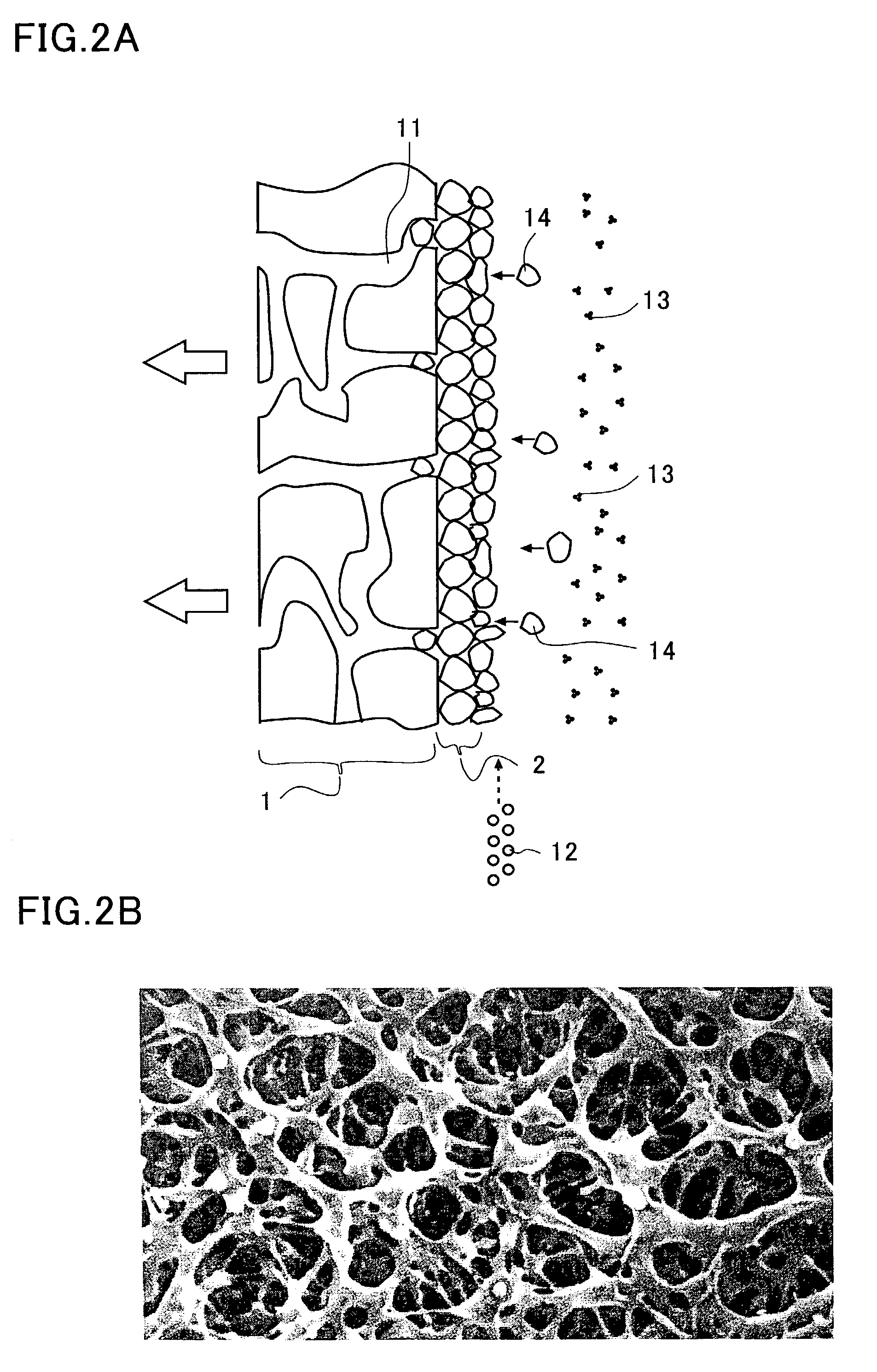Filtering method of a colloidal solution
a filtering method and colloidal solution technology, applied in the direction of water/sewage treatment by ion exchange, differential sedimentation, treatment water, etc., can solve the problems of large amount of slurry diluted by pure water discharge, environmental problems, wastewater treatment technology, etc., and achieve the effect of quick loading and difficult processing of large amounts of wastewater
- Summary
- Abstract
- Description
- Claims
- Application Information
AI Technical Summary
Benefits of technology
Problems solved by technology
Method used
Image
Examples
Embodiment Construction
[0054]First, the terms used in describing this invention are described. A colloidal solution is a solution in which fine particles having diameters ranging from 1 nm to 1 μm are dispersed. These particles are subject to the Brownian motion and are capable of passing through regular paper filters but not semipermeable membranes. The slow coagulation speed of the colloidal particles is due to the electrostatic forces between the particles, which prevent the particles from contacting.
[0055]The term sol is used as nearly synonymous with a colloidal solution. Different from a gel, sol is dispersed in a liquid, presents fluidity, and is subject to the Brownian motion.
[0056]A gel is a state where colloidal particles have lost mobility and become rigid. For example, agar and gelatin become sol when they are dissolved in warm water, but lose fluidity and become a gel when they are cooled. Gels can be divided into hydrogel that contains a large amount of fluid and xerogel that is dry.
[0057]A ...
PUM
| Property | Measurement | Unit |
|---|---|---|
| Thickness | aaaaa | aaaaa |
| Pressure | aaaaa | aaaaa |
Abstract
Description
Claims
Application Information
 Login to View More
Login to View More - R&D
- Intellectual Property
- Life Sciences
- Materials
- Tech Scout
- Unparalleled Data Quality
- Higher Quality Content
- 60% Fewer Hallucinations
Browse by: Latest US Patents, China's latest patents, Technical Efficacy Thesaurus, Application Domain, Technology Topic, Popular Technical Reports.
© 2025 PatSnap. All rights reserved.Legal|Privacy policy|Modern Slavery Act Transparency Statement|Sitemap|About US| Contact US: help@patsnap.com



